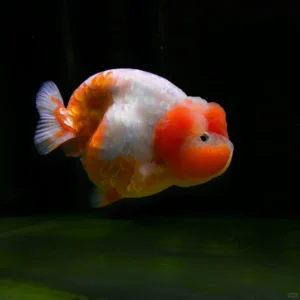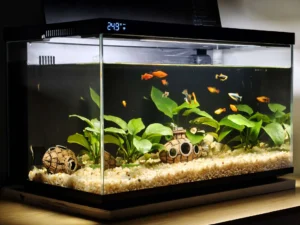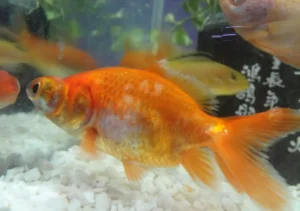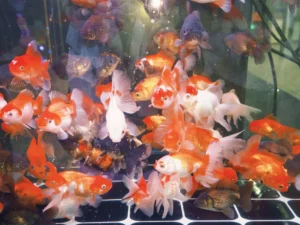When choosing Ranchu goldfish, one of the most common mistakes is ignoring the issue of “tipping forward” (losing balance and head-diving). In fact, this problem comes down to a simple principle of physics—the overall center of gravity of the fish. Certain body features of a Ranchu may predetermine whether it will tip forward later in life. Below are the main factors that influence quality, price, and long-term growth of Ranchu goldfish.
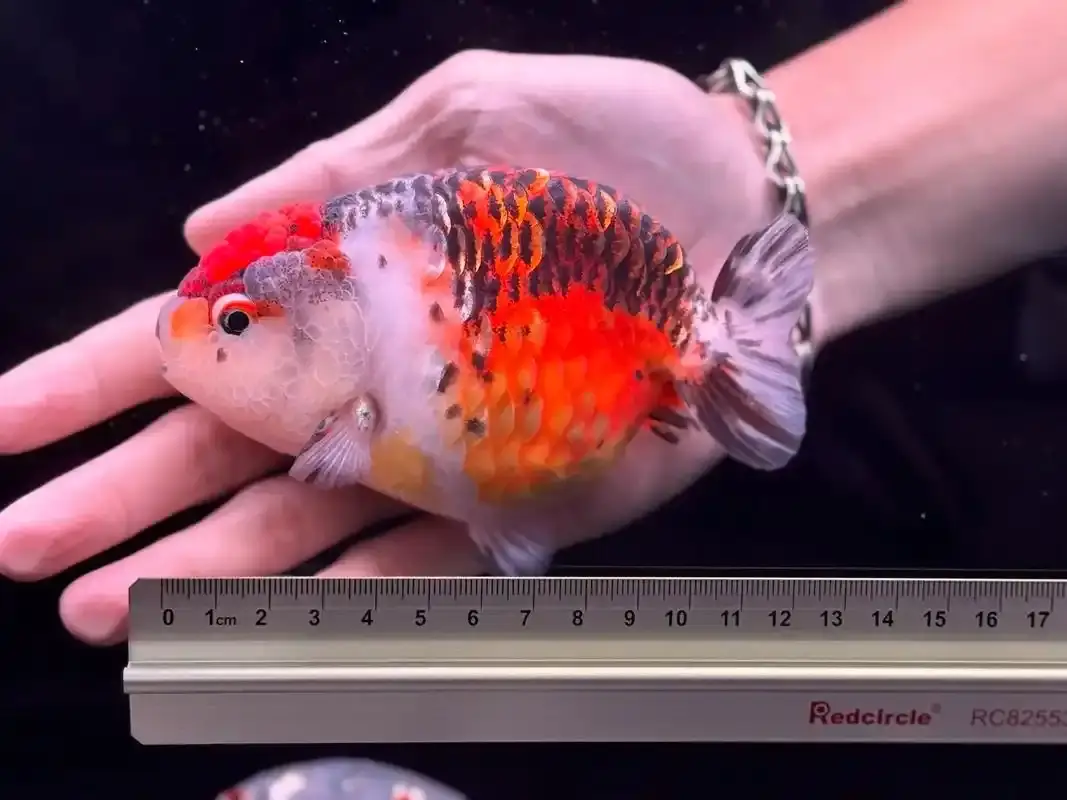
Body Shape
When I first started keeping Ranchu goldfish, I found short-bodied ones very cute and appealing. But after spending more time visiting fish farms in Fuzhou and talking with experienced breeders, I realized that short-bodied Ranchu are usually sold earlier. There are two main reasons:
- Slower growth rate. Short-bodied Ranchu eat the same amount of food as medium or long-bodied Ranchu, but they grow more slowly. For example, in the same year, a medium-bodied Ranchu may reach 14 cm, while a short-bodied one may only reach 12 cm. Since more than 95% of fish farms sell by length, short-bodied Ranchu appreciate in value much more slowly. This is why breeders tend to sell them off early.
- Higher risk of tipping forward. Short-bodied Ranchu usually have larger heads compared to their body size. Due to leverage principles, the heavier head makes them much more likely to tip forward in the future. Although there may be rare exceptions, fish farms generally do not keep short-bodied, big-headed Ranchu because the risks are too high. For serious hobbyists, the best choice is still a medium or long-bodied Ranchu. They can grow larger, become bulkier, and have a lower rate of tipping forward.
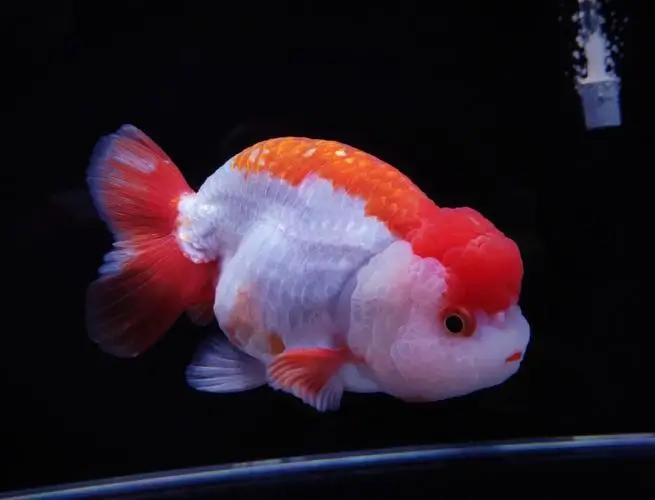
Back
The shape of the back also affects balance. Ranchu with a smooth “comb-shaped” back usually carry their center of gravity around the highest point of the back. This makes it easier for the fish to maintain balance and reduces the chance of tipping forward.
However, if the front of the back is too straight or the rear curves upward too sharply, the likelihood of tipping forward increases significantly. In particular, if the angle between the back and the tail rises too high, such fish almost always suffer from balance issues later.
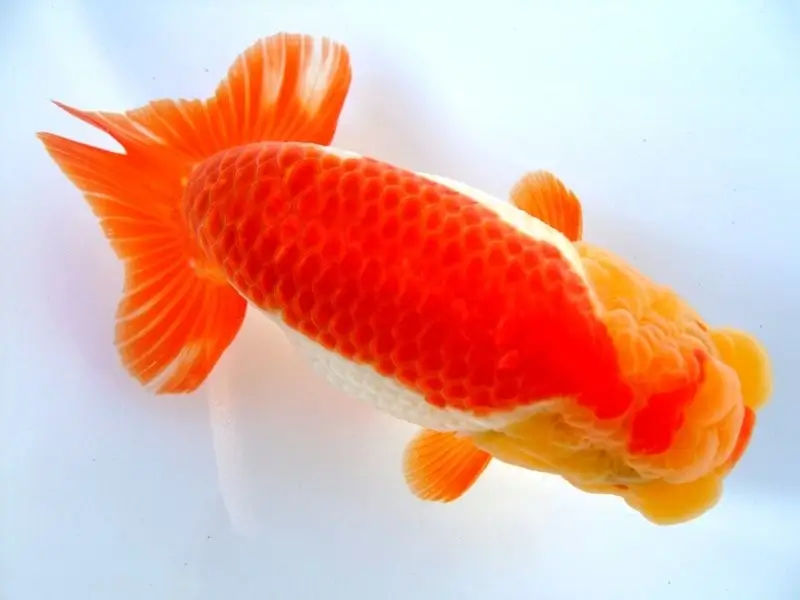
Belly
A good Ranchu should have a full, well-rounded belly positioned slightly toward the rear. This body type helps lower the risk of tipping forward, again due to leverage principles. Even if the belly is set farther back, very few fish can develop such a large head that it causes the body to flip forward.
On the other hand, some Ranchu have bellies that sit closer to the front. While a few individuals may avoid tipping for a while, especially in their second year, most of them eventually face problems. As the head continues to grow each year, the heavy front pulls the body downward, making tipping forward inevitable.
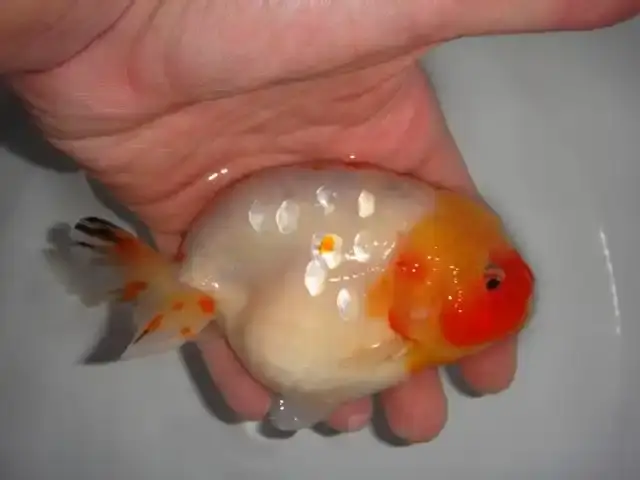
Tail
The tail is another critical factor in determining the value of Ranchu goldfish. A thick, wide tail indicates strong growth potential. Ideally, the tail should have a spread angle of about 100–150 degrees, which is considered standard.
If the tail spreads too widely or the tail base (shoulder) and tip are equally stiff (a so-called “airplane tail”), the fish will have difficulty controlling movement in the water. This often leads to severe tipping forward or even loss of body balance, with the belly pointing upward.
The angle between the back and the tail base should stay around 90 degrees, with a tolerance of about 10 degrees. A smaller angle makes it harder to stabilize in the water, while a larger angle looks less attractive.
Key Features for Advanced Hobbyists
For serious Ranchu enthusiasts who want show-quality fish, the selection criteria are even stricter:
A compact, dense head growth (wen).
Wide spacing between the eyes.
A broad back and thick tail base.
A tail with good spread and strength, but not overly stiff. The tail should be thick and wide.
Medium to long body shape with a smooth “comb-shaped” back.
A full belly set toward the rear.
A 90-degree angle between the back and tail base.
In short, when choosing Ranchu goldfish, the principle is always bigger is better. A well-proportioned, strong Ranchu with proper balance will not only grow beautifully but also hold its value in the market.
FAQs About Ranchu Goldfish Prices and Quality
Q1: Why are Ranchu goldfish so expensive?
Ranchu goldfish are considered the “king of goldfish” because of their unique appearance and high breeding standards. Their price depends on body shape, head growth, tail quality, and balance. Show-grade Ranchu are rare, require years of selective breeding, and often fetch very high prices.
Q2: How do I avoid buying a Ranchu that tips forward?
Look for Ranchu with a medium to long body, a smooth comb-shaped back, a full belly positioned toward the rear, and a tail angle around 90 degrees. Avoid short-bodied fish with oversized heads, as they are more likely to lose balance later.
Q3: What body shape is best for Ranchu goldfish?
The ideal Ranchu has a medium to long body, compact head growth, a broad back, thick tail base, and a well-rounded rear-positioned belly. These traits help the fish grow large, stay balanced, and develop into show-quality specimens.
Q4: Do Ranchu goldfish grow quickly?
Growth rate depends on body shape. Medium and long-bodied Ranchu grow faster and reach larger sizes compared to short-bodied ones. With proper care and feeding, a Ranchu can reach 12–14 cm within a year.
Q5: Are short-bodied Ranchu worth buying?
Short-bodied Ranchu may look cute when young, but they usually grow more slowly and have a higher risk of tipping forward. Most breeders sell them early, while serious hobbyists prefer medium to long-bodied Ranchu for better long-term results.

